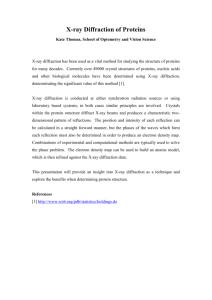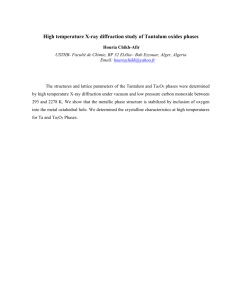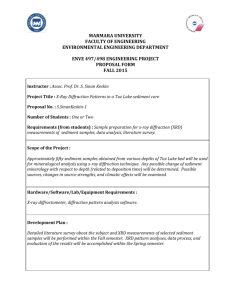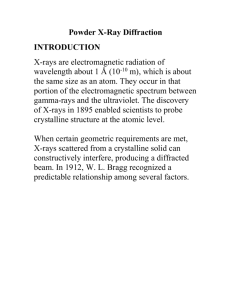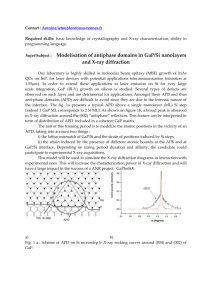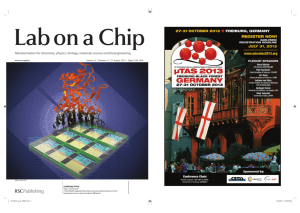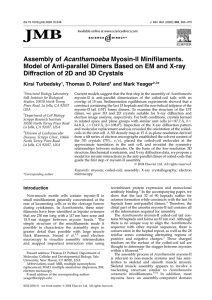EPAPS Corrected
advertisement
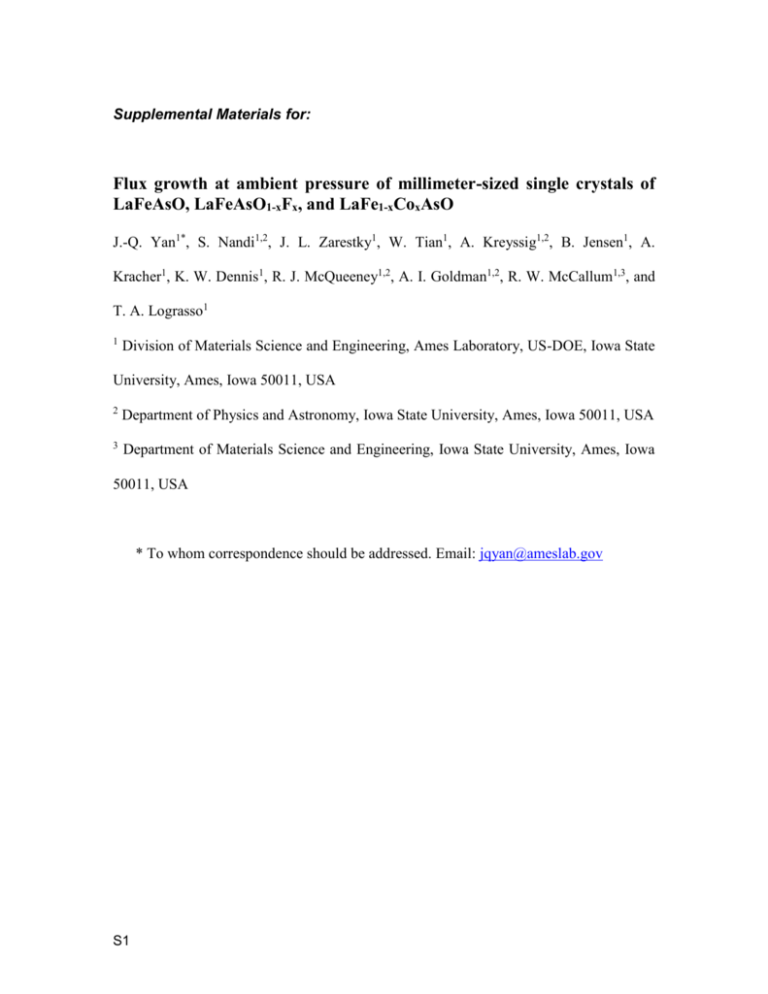
Supplemental Materials for: Flux growth at ambient pressure of millimeter-sized single crystals of LaFeAsO, LaFeAsO1-xFx, and LaFe1-xCoxAsO J.-Q. Yan1*, S. Nandi1,2, J. L. Zarestky1, W. Tian1, A. Kreyssig1,2, B. Jensen1, A. Kracher1, K. W. Dennis1, R. J. McQueeney1,2, A. I. Goldman1,2, R. W. McCallum1,3, and T. A. Lograsso1 1 Division of Materials Science and Engineering, Ames Laboratory, US-DOE, Iowa State University, Ames, Iowa 50011, USA 2 Department of Physics and Astronomy, Iowa State University, Ames, Iowa 50011, USA 3 Department of Materials Science and Engineering, Iowa State University, Ames, Iowa 50011, USA * To whom correspondence should be addressed. Email: jqyan@ameslab.gov S1 S1 In-plane electrical resistivity of LaFeAsO single crystals Six separate single crystals from the same batch were selected for measurements of the in-plane electrical resistivity using a QD Physical Property Measurement System (PPMS). Electrical contact was made to the samples using LakeShore silver epoxy to attach Cu wires in a 4-probe configuration. Two typical behaviors, designated R1 and R2, were observed as shown in Fig. S1. The decrease in resistivity below Ts for R1 is similar to that found for polycrystalline samples. In contrast, R2 increases while cooling below Ts. A careful WDS study of these six crystals did not find any noticeable difference of Ta-content. Therefore, it is unlikely that the discrepancy is due to the Ta incorporation. On the other hand, we found that all crystals grown from a mixture with the charge : flux molar ratio of 1 : 10 shows the same R2-type behavior. This indicates that the resistivity anomalies may be sensitive to defects formed in the growth process since the higher dilution ratio generally results in lower growth rates for the same cooling rate. From the temperature dependence of d[R(T)/R(300)]/dT of R1, the structural and magnetic transitions are identified at Ts = 153 K and TSDW = 140 K, respectively. S2 Specific heat of LaFeAsO crystal Figure S2 presents the temperature dependent specific heat measured using a QD PPMS. One lambda-type anomaly is clearly observed at approximately 150 K. The inset highlights the details of the anomaly after subtraction of a smooth background determined by fitting the specific heat data well below and above the lambda anomaly by a polynomial function. The structural and magnetic transition temperatures are determined to be 157 K and 136 K, respectively, following Kondrat et al.S2 S2 S3 X-ray diffraction experiments on LaFeAsO single crystals Powder x-ray diffraction experiments were performed on a PANalytical X’pert PRO MPD x-ray diffractometer with monochromatic Cu Kα radiation at room temperature by step scanning in the angle range 10º ≤ 2θ ≤ 80º with increments of 0.02º and dwelling time of 120 seconds. Temperature-dependent, single crystal x-ray diffraction measurements were performed using high energy x-rays at the station 6-ID-D in the MU-CAT sector of the Advanced Photon Source, Argonne National Laboratory. The energy of incident x-ray energy was 129 keV, ensuring full penetration of the sample with dimensions of 2×2×0.2 mm3. The beam size was 0.2×0.2 mm2. To record the two dimensional diffraction patterns, a MAR345 image plate detector was positioned 2192.5 mm behind the sample. The sample, with the c-axis parallel to the incident beam, was attached to Kapton tape and mounted on a closed cycle, Displex refrigerator. The sample was rocked by ± 3.2º about both axes perpendicular to the incoming beam. Rocking the sample through these small angular ranges provides an image of reciprocal space planes that lie normal to the beam direction. The diffraction patterns were recorded while the temperature was varied between 7 and 165 K. Above Ts, high energy x-ray diffraction revealed only diffraction spots corresponding to the tetragonal space group P4/nmm (see right panel of Fig. S3), consistent with the earlier report.S3(a) Below Ts = 154.5 K, however, the spots split (see left panel of Fig. S3) according to the twinning law described by Tanatar et al., S3(b) consistent with a tetragonal (P4/nmm)-to-orthorhombic (Cmma) phase transition.S3(c) The S3 small splitting (≈0.0024) observed at 120 K is, again, consistent with the previous report on polycrystalline samples. S4 References for supporting information S2. A. Kondrat, J.E. Hamann-Borrero, N. Leps, M. Kosmala, O. Schumann, A. Köhler, J. Werner, G. Behr, M. Braden, R. Klingeler, B. Büchner and C. Hess, Eur. Phys. J. B 70, 461 (2009) S3 (a) Y. Kamihara, T. Watanabe, M. Hirano, and H. Hosono, J. Am. Chem. Soc. 130, 3296 (2008). (b) M. A. Tanatar, A. Kreyssig, S. Nandi, N. Ni, S. L. Bud'ko, P. C. Canfield, A. I. Goldman, R. Prozorov, Phys. Rev. B 79, 180508 (R) (2009). (c) T Nomura, S W Kim, Y Kamihara, M Hirano, P V Sushko, K Kato, M Takata, A L Shluger and H Hosono, Supercond. Sci. Technol. 21, 125028 (2008). S4 Figure S1. Examples of the two types of temperature dependent in-plane resistivity of LaFeAsO single crystals. S5 Figure S2. Temperature dependence of specific heat of a LaFeAsO crystal. Inset shows the background subtracted data. S6 Figure S3. High energy x-ray diffraction patterns of LaFeAsO single crystal at T = 7 K and 160 K, respectively. The insets display the (220) and (020) peaks in greater detail. S7
